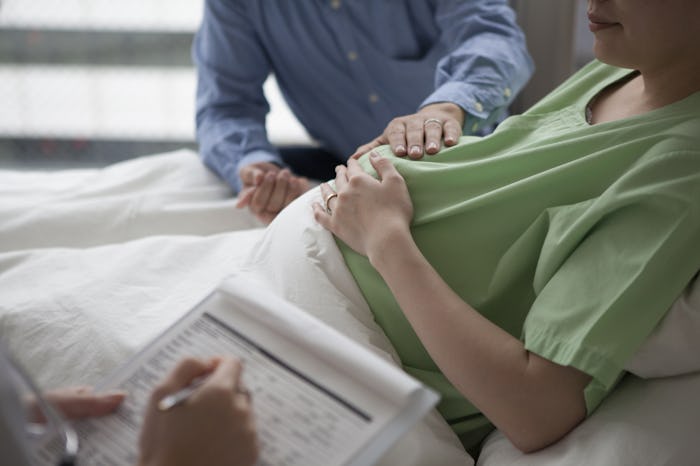Life
Maternal Mortality Stats In 1970 Versus Today Show Moms Are Getting Even Less Support
We’ve structured health care so that motherhood is far more deadly in the U.S. than in any other advanced countries, and the U.S. is a rare country in which maternal deaths have actually become more common in recent years, according to The New York Times. Maternal morality in 1970, during the transition from the Baby Boomer generation to Generation X, was on a downward decline. From 1970 to 1979, after the healthcare industry witnessed a growth in technologic advances in neonatal medicine and perinatal services, neonatal mortality plummeted 41 percent and post-neonatal mortality declined 14 percent, according to the Centers for Disease Control and Prevention. In recent years, however, it's on the rise.
During the late 1960s, Medicaid and other federal programs were just recently implemented, so it makes sense that both maternal and infant mortality declined substantially, according to the CDC. But as these programs continue, why are more mothers losing their lives during and just shortly after childbirth?
In the U.S., the rate of maternal death during or shortly after childbirth rose 27 percent between 2000 and 2014, according to a recent report published in Obstetrics and Gynecology. That means that, in 2000, nearly 19 of every 100,000 women died during or within 42 days of giving birth and, in 2014, the number climbed up to nearly 24 women out of 100,000. The research also points out that black and hispanic women are at a higher risk of pregnancy-related deaths than white women.
The study suggested that the recent increase in maternal morality could have resulted from a number of things: Women are having babies later in life, obesity rates are higher, and diseases like diabetes and high blood pressure are running rampant so, simply, women are entering pregnancy with more risk factors than ever before.
Every state including D.C. has shown an increase in maternal mortality over the past two decades except California, according to the research published in Obstetrics and Gynecology. This data has gained national attention over the past year, since the rest of the world is seeing maternal death rates fall. And the problem is especially pronounced in Texas, where a recent analysis found that moms are dying at a rate higher than anywhere else in the industrialized world.
Texas has the highest maternal mortality rate in the country — a woman in Texas is about 10 times as likely to die from pregnancy as a woman elsewhere in the world, The New York Times reported. In fact, Texas's numbers doubled between 2010 and 2012 alone, according to 2016 research published in the The American Journal of Nursing. This is partially because some women’s health clinics have closed and access to Medicaid is more limited.
California, on the other hand, was able to cut its maternal death rate in half, down to 7.3 deaths per 100,000 births in 2013, which is just one-third of the national average, the Houston Chronicle reported. The state's success may be due to the fact that it boasts the California Maternal Quality Care Collaborative, a public health effort that has officials working to address two major causes of maternal death: preeclampsia and hemorrhage during childbirth, according to Fit Pregnancy.
While states look to mirror California's efforts, ProPublica and NPR have spent the last few months searching social media and other sources for the family members of mothers who died, trying to understand what happened to them and why. They've come up with a list of 134 women thus far who died from pregnancy-related causes in 2016. They are part of the estimated 700 to 900 mothers in the U.S. who lost their lives in 2016 during or just after childbirth. The purpose of the list is to shed light on the lessons to be learned from each death, which the report says are often overlooked or unevaluated after the a woman's death.
"The U.S. has the highest rate of maternal mortality in the developed world, yet these deaths of women from causes related to pregnancy or childbirth are almost invisible," the list reads, noting that, when a new or expectant mother dies, her obituary rarely mentions the circumstances and her identity is, instead, shrouded by medical institutions, for example, or state maternal mortality review committees.
ProPublica and NPR plan to expand their 2016 photo gallery as they find more women and hear from more families. If you know of someone who died from pregnancy-related complications, you can contact them here and help the country piece together the fatal issues expectant and new mothers are facing as Congress moves to revamp the healthcare system.
Check out Romper's new video series, Bearing The Motherload, where disagreeing parents from different sides of an issue sit down with a mediator and talk about how to support (and not judge) each other’s parenting perspectives. New episodes air Mondays on Facebook.
